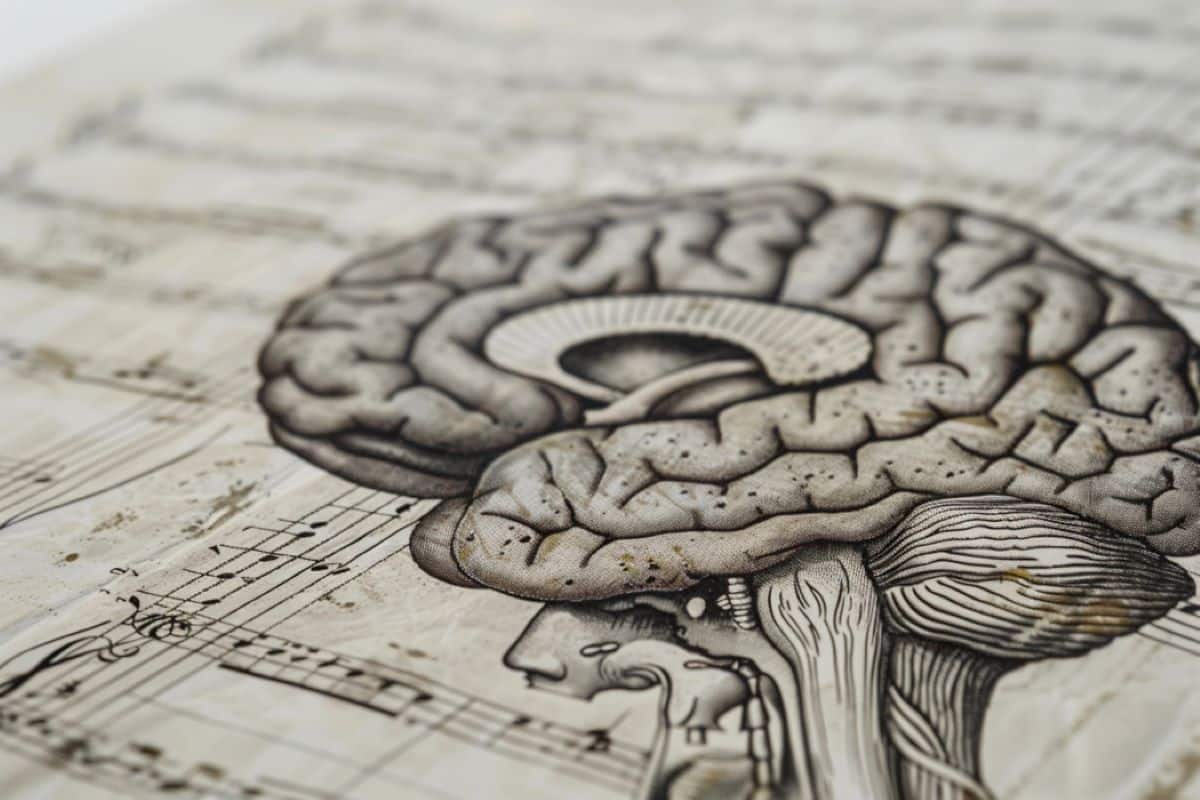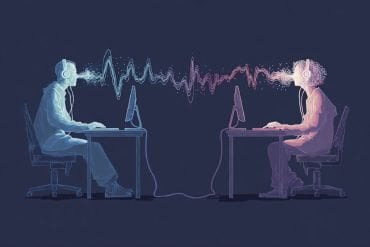Summary: A new study reveals how our brains recognize and predict musical sequences, activating areas related to sound, memory, and emotions. This understanding could help develop tools to detect cognitive decline and dementia.
The study measured brainwaves of 83 participants, showing the complex neural processes involved in music perception. Future research will explore how these mechanisms change with age and cognitive impairments.
Key Facts:
- Complex Brain Activation: Music recognition involves sound, memory, and emotional processing.
- Potential for Dementia Detection: Findings could help develop screening tools for cognitive decline.
- Study Details: Brainwaves of 83 participants were measured while they listened to music.
Source: Aarhus University
Ever heard just a snippet of a song and instantly known what comes next? Or picked up the rhythm of a chorus after just a few notes?
New research from the Center for Music in the Brain at Aarhus University and the Centre for Eudaimonia and Human Flourishing at the University of Oxford has uncovered what happens in our brain when we recognise and predict musical sequences.
When we turn on the radio and our favourite song starts playing, our brain reacts in a complex pattern, where areas that process sound, emotions, and memory are activated.
In a feedforward and feedback loop, our auditory cortex first responds to the sounds and sends information to other brain areas, like the hippocampus, which is involved in memory, and the cingulate gyrus, which helps with attention and emotional processing.
This process helps us recognise songs quickly and predict what comes next, making listening to music an enjoyable and familiar experience.
Knowing how our brain reacts to music can play a pivotal role in understanding our cognitive functions, explains one of the leading researchers behind the study, Associate Professor Leonardo Bonetti from the Center for Music in the Brain at Aarhus University:
“Our research provides detailed insights into the brain’s ability to process and predict music and contributes to our broader understanding of cognitive functions. This could make a difference for studying brain health, as it offers potential pathways to explore how ageing and diseases like dementia affect cognitive processing over time.”
In fact, understanding how our brain rocks along to Bohemian Rhapsody or reacts to a childhood classic may help researchers detect dementia in the future.
“In the long run, these findings could inform the development of screening tools for detecting the individual risk of developing dementia just using the brain activity of people while they listen to and recognise music.”
In the study, the researchers measured the brainwaves of 83 people as they listened to music, and they will follow up with additional studies, says Leonardo Bonetti.
“Future studies could explore how these brain mechanisms change with age or in individuals with cognitive impairments. Understanding these processes in more detail could lead to new interventions for improving cognitive function and quality of life for people with neurological conditions.”
About this music and neuroscience research news
Author: Vibe Noordeloos
Source: Aarhus University
Contact: Vibe Noordeloos – Aarhus University
Image: The image is credited to Neuroscience News
Original Research: Open access.
“Spatiotemporal brain hierarchies of auditory memory recognition and predictive coding” by Leonardo Bonetti et al. Nature Communications
Abstract
Spatiotemporal brain hierarchies of auditory memory recognition and predictive coding
Our brain is constantly extracting, predicting, and recognising key spatiotemporal features of the physical world in order to survive. While neural processing of visuospatial patterns has been extensively studied, the hierarchical brain mechanisms underlying conscious recognition of auditory sequences and the associated prediction errors remain elusive.
Using magnetoencephalography (MEG), we describe the brain functioning of 83 participants during recognition of previously memorised musical sequences and systematic variations.
The results show feedforward connections originating from auditory cortices, and extending to the hippocampus, anterior cingulate gyrus, and medial cingulate gyrus. Simultaneously, we observe backward connections operating in the opposite direction.
Throughout the sequences, the hippocampus and cingulate gyrus maintain the same hierarchical level, except for the final tone, where the cingulate gyrus assumes the top position within the hierarchy.
The evoked responses of memorised sequences and variations engage the same hierarchical brain network but systematically differ in terms of temporal dynamics, strength, and polarity.
Furthermore, induced-response analysis shows that alpha and beta power is stronger for the variations, while gamma power is enhanced for the memorised sequences.
This study expands on the predictive coding theory by providing quantitative evidence of hierarchical brain mechanisms during conscious memory and predictive processing of auditory sequences.







